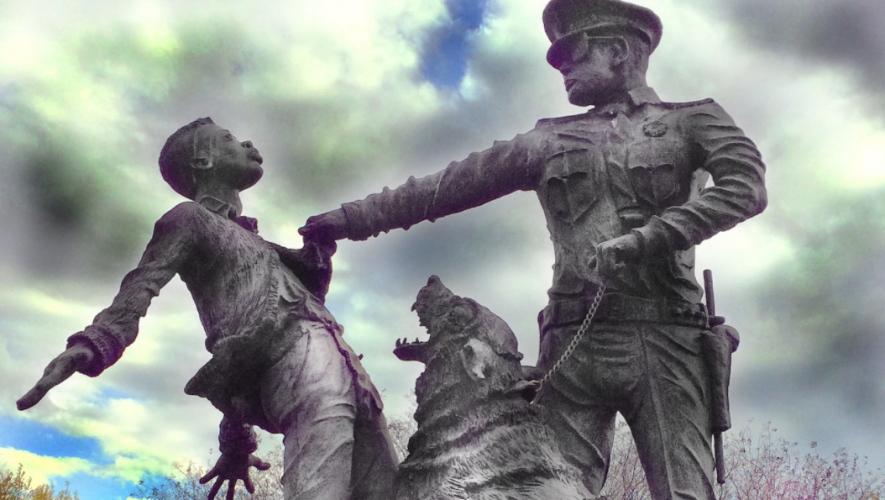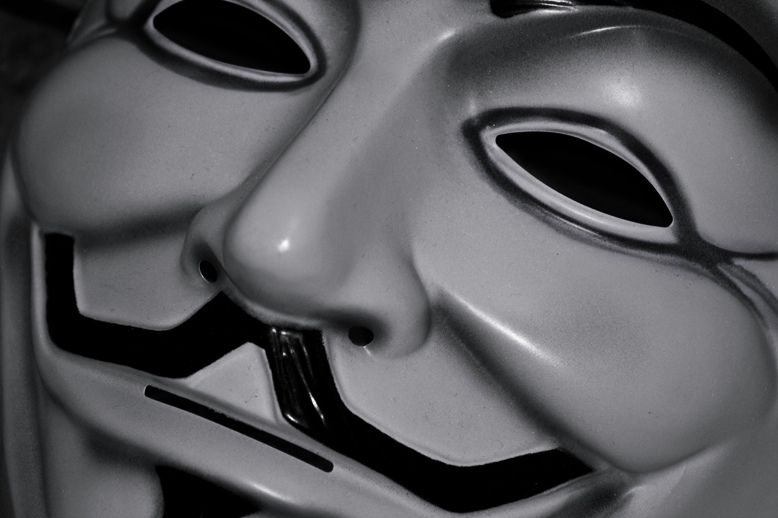Photo by Andy Montgomery
Last August, Jacob Blake was shot seven times in the back by a police officer in Kenosha, Wisconsin. As the incident gained national attention, NBA players protested the shooting by temporarily halting playoff games. But anyone who remembered how NFL quarterback Colin Kaepernick’s peaceful protest was met with threats, scorn, and blackballing would be wholly unsurprised by the response. Right-wing commentators pounced on the display of solidarity, casting the players as entitled millionaires whose very wealth debunked the existence of racial inequality.
Predictably, President Trump disparaged the league, complaining, “They’ve become like a political organization,” and stating, “That’s not a good thing for sports or for the country.” The subtext behind this reaction is that successful Black Americans should feel grateful and forget about the structures that make their success improbable for others.
This response is not shocking in the context of our history. However, I am still astounded by the ability of the American lie—the underlying belief that peaceful, nonviolent protest is a legitimate and effective means to address grievance—to hold up under its own staggering contradictions. This idea is hollow coming from a nation that pretends to condemn all forms of violence while revering the violence that built it.
Our Racist Roots
As I sit here in Boston, I am constantly surrounded by the history that weighs down this lie. As a schoolboy, I was regaled with tales of the American Revolution, an arduous, righteous struggle against the oppressive British government, an ode to the idea that some injustices are so great that all means must be used to redress them. Less than two miles from my dorm lies Boston Common, where a mob tarred and feathered British tax collector John Malcolm. This was not an isolated incident.
Yet in no textbook have I ever seen it suggested that the violence in this act—and the very nature of the Revolutionary War—took away from its goals and morality. But when textbooks describe the Civil War, they suddenly become somber, painting the fighting as a tragedy. Ken Burns’s famous 1990 documentary portrays the war as an unfortunate story of brother turned against brother, presenting both sides as fighting nobly.
This historical revisionism, propagated by the Daughters of the Confederacy and unchallenged by historians for decades, has become ingrained in the national conscience. This was put on display when President Trump questioned, “Why was there the Civil War? Why could that one not have been worked out?” We are unambiguous in our national chest thumping when it comes to the American Revolution. But our nation is filled with regret over arguably the most necessary war in American history. One side fought for the right to enslave human beings, the right to perpetuate crimes against humanity. Casting their struggle as arduous and the fight for Black liberation as divisive exemplifies our commitment to White supremacy.
It’s a remarkable parallel to the reaction to Black Lives Matter. The instant a massive crowd gathers to redress racial inequality, the movement is deemed radical and a threat to the American way of life. Even after four hundred years of violence against Black people, we ignore the underlying frustration.
This contradiction has been built into the very fabric of our existence; America as it is could not exist otherwise. Educators cannot continue to tell us that the nonviolence of the Civil Rights Movement is what guaranteed its success, a perspective that ignores the fundamental emancipatory fable of the country. This double standard has been the source of ire of Black activists from Douglass to Baldwin to Malcolm X.
Ta-Nehisi Coates writes that Malcolm X “preferred to illuminate the bitter calculus of oppression, one in which a people had been forced to hand over their right to self-defense, a right enshrined in Western law and morality and taken as essential to American citizenship, in return for their civil rights that they had been promised a century earlier.” In his autobiography, Malcolm X remarked “if anyone attacks you, we do not teach you to turn the other cheek.” Those who scoff at this repudiation of the Christian virtue don’t recognize that it is White Americans’ unwillingness to live up to it that led to this rejection.
“The pain you cause in God’s name, points only to yourself to blame.”
– Stevie Wonder, It’s Wrong (Apartheid)
My very presence in America is evidence to the sham of this Christian virtue, yet Americans remain willfully blind to their original sin. Our national conscience only permits White people to meet oppression with force.
The Hypocrisy of “Respectable Protest”
No nation draws a clearer dichotomy between what is legally allowed and morally justified. Beyond the most striking historical examples of legal discrimination, the law has historically been applied inconsistently, incorrectly, or flat-out ignored when it comes to Black issues. In “Letter From a Birmingham Jail,” The Reverend Martin Luther King Jr. detailed how even the most technical aspects of the law were weaponized against his movement for political reasons, not out of any genuine concern for the rule of law.
“I have been arrested on a charge of parading without a permit. Now, there is nothing wrong in having an ordinance which requires a permit for a parade. But such an ordinance becomes unjust when it is used to maintain segregation and to deny citizens the First-Amendment privilege of peaceful assembly and protest.”
“But,” I hear you saying, “Doesn’t King’s struggle show how a righteous cause can be advanced through existing structures?” Not at all. Before he was assassinated—which itself shows how scorned his peaceful protest truly was—King professed his disappointment with “the white moderate” who preferred “order” to justice; King also asserted a “moral responsibility to break unjust laws.” One must imagine numerous defeats to the movement—and the assassination of Medgar Evers, Malcolm X, and other leaders—would take a toll on even the most patient of activists. Polls from the time showed Americans disapproved of nearly every civil rights protest; nearly two-thirds of Americans disliked King.
America is more than willing to overlook—or even encourage—political violence when the perpetrators are White. After the 1970 Hard Hat Riot in New York City, where dozens of workers viciously beat student protesters while police looked on, President Nixon supported the workers, not the students. It is quite revealing that the President felt obligated to hear the concerns of the brutalizers—who he considered real Americans—and not the peaceful protestors.
In 2000, GOP operatives organized a protest of the 2000 presidential election recount in Miami-Dade County, Florida. Their efforts—which included trampling, punching, and kicking as they rushed the doors outside the election supervisor’s office—made it impossible for the count to meet the court-mandated deadline and got the canvassing board to believe that the recount was somehow unfair. They successfully halted the recount and helped to propel George W. Bush to the presidency.
Political violence is a tried and true practice of the right. But political upheaval of any kind automatically discredits Black Lives Matter.
Our Racist Roots Are Alive and Well
White Americans are protected by the law, but not bound by it. They can call upon the law to protect their right to bear arms while protesting state quarantines and mask mandates, but are not bound by curfews and police ordinances. When police feel their interests align with those of protestors, these so-called “law-abiding citizens” certainly are not shot with rubber bullets, doused with tear gas, and beaten with clubs even if they break protocol. In fact, the president heaps praise upon them.
The Governor of Michigan should give a little, and put out the fire. These are very good people, but they are angry. They want their lives back again, safely! See them, talk to them, make a deal.
— Donald J. Trump (@realDonaldTrump) May 1, 2020
Many White Americans heed this implicit call to violence. Six months after Trump’s “Liberate Michigan!” tweet, thirteen members of the “Wolverine Watchmen” gang were arrested for conspiring to kidnap Governor Gretchen Whitmer. They planned to put her on trial for “treason,” doling out their own form of justice for her “tyrannical” COVID-19 lockdown. This plan didn’t appear out of thin air. The men found tacit encouragement from the president of the United States. Much of the media coverage called them a “militia,” a privilege seldom afforded to Black protestors it often labels as “thugs.”
Resistance to oppression, even when imagined, is lauded when it comes from White Americans. But a different story is told when it involves the all-too-real oppression faced by Black people.
On February 23 this year, Ahmaud Arbery was murdered by two White men—Gregory McMichael and his son Travis—as he jogged through his neighborhood in Atlanta. The men, armed with guns, hunted Arbery through the streets, cutting him off in their pickup trucks. When Arbery tried to escape the trap, Travis McMichael exited the truck and brandished his shotgun at him before shooting three times. As Arbery’s life faded, McMichael kicked his body, and exclaimed, “fucking nigger.”
It is a crime to point a gun at another person. Attempting to wrench a gun out of the hands of someone who has brandished it at you is reasonable self-defense; no one in their right mind would claim that victims of school shootings should be prosecuted for rushing a gunman. Yet Brunswick District Attorney George Barnhill told detectives that the McMichaels acted in self-defense, a “justifiable” reaction to Arbery reaching for the gun. The Brunswick DA’s Office advised the Glynn County Police Department, where Gregory McMichael was formerly an officer, to make no arrests.
The arrest two months after the despicable crime would not have happened without the video footage—which was released in a shocking attempt to absolve the McMichaels—taken by the perpetrators. This lynching was different from the over four thousand cases that have occurred in this country in the past 150 years because some justice might be served. But skepticism about this is simply realism. The presence of video footage often makes no difference.
The notion that a White aggressor brandishing a firearm can claim self-defense against someone trying to neutralize that threat resurfaced again after seventeen-year-old Kyle Rittenhouse killed two people at the August 25 Black Lives Matter protests in Kenosha, Wisconsin. Again, some right-wing media outlets displayed an astounding ability to frame Rittenhouse, who drove from Illinois to Wisconsin with an illegal firearm, as an innocent victim of circumstance.
The act of him shooting a man dead was excused as that of an innocent child in fear for his life. His reason for being there? “Maintaining order” and “protecting property” despite having no ties to any businesses there when he fired the fatal shots. His explanation for killing a protester using his skateboard to disarm Rittenhouse? “Self-defense.” The curfew that police used as an excuse to brutalize and arrest protesters didn’t apply to the armed vigilante, who received aid and support from police. Jacob Blake was perceived as such a threat to police that the idea of letting him go and arresting him later, which is often recommended, was inconceivable. But police had no problem letting Rittenhouse, a murderer, head back to Illinois to sleep calmly in his own bed before being apprehended.
His lawyer said Rittenhouse “exercised his God-given, Constitutional, common law and statutory law right to self-defense.” But America’s history has shown the scope of this law to be limited. The McMichaels had not seen Ahmaud commit any crime other than jogging while Black, whereas protestors had seen Kyle murder someone. But in the eyes of many Americans, Ahmaud had to be detained because he was Black. Kyle did not.
“In America,” Ta-Nehisi Coates writes, “it is traditional to destroy the black body—it is heritage.” The country is programmed to see Black life as expendable. The indictment of Breonna Taylor’s murderer for wanton endangerment revealed that his true crime was not taking Black life, but doing it sloppily.
Black people, or those protesting for their causes, are bound by the law in their options for dissent; the protests themselves stem from the failure of the law to provide protection or justice at the hands of the police. It is no coincidence that the nation that extolled George Washington as a liberator also executed abolitionist John Brown. The White Americans who loudly proclaim their opposition to rioting often reside in communities where their own parents rioted in order to preserve housing segregation. It’s political suicide to speak out about the causes of unrest in Black communities today, while the rioting of White Americans receives the full sanction of the law.
The inconsistent application of the law as a tool to wage all-out war against specific dissent happened in Boston too. In late May, the nation saw widespread protests sparked by the heinous murder of George Floyd by the Minneapolis police. In Boston, thousands marched from Nubian Square to the State House. At 9:40 p.m. on May 31, the Boston Police Department tweeted:
Peaceful protestors along Tremont Street are asked to vacate the area. If you are a peaceful protestor, the time to vacate and go home is now.
— Boston Police Dept. (@bostonpolice) June 1, 2020
Nineteen minutes later, they added:
Those now protesting in the streets of Boston have surrendered the moral high ground as efforts to hurt and harm police officers continue to intensify in our city. Men and women of BPD doing their best to restore order and keep the peace.
— Boston Police Dept. (@bostonpolice) June 1, 2020
The implication was clear: You’ve been allowed to proceed thus far as a sign of our goodwill. If you remain you have forfeited your right to be safe, and we can impose our will on anyone we can find. At the same time, the city went to great lengths to leave as many people as possible at the mercy of police. Officers blocked protestors from getting on the T, while the MBTA strategically shut down T stops in the area.
The violent response to civil disobedience clearly shows how contemptuously the state views “peaceful protest” by Black Americans. On June 1, President Trump and Attorney General Bill Barr savagely ordered an attack on protesters in Lafayette Square so the President could conduct a photo-op at the church in front of the White House. Police drew in protesters by kneeling, then opened fire with tear gas and rubber bullets; even reporters were assaulted for documenting the atrocities.
As officers on horseback strode down the street to the tune of screams, the scene seemed ripped out of history itself, a parallel to the violence in the streets of Birmingham, Selma, and other southern cities in the fifties and sixties. Flesh ripped apart by police canines, bodies blasted into the street by fire hoses, clothes torn off, ribs and bones cracked by batons; the still images in black and white never fully capture the depths of human suffering on those days.
How can nonviolence ever lead to meaningful change in a nation whose default response is barbarism? It is a monument to America’s commitment to White supremacy; one that holds that Black people do not have the same recourse to address grievance as White people, and must allow their bodies to be broken in the name of nonviolence.
To have a path forward, America needs a great reckoning on its true attitude toward violence. At the present, it is not willing to have it. As long as large swaths of the country continue to be swayed by fearmongering about suburbs being “overrun” by low-income housing (code for minorities) and violence, they will be unable to face the historical fact that their suburbs themselves were built on violence, on firebombings, threats, and police-sanctioned terrorism against Black residents.
If we maintain our ahistorical national perspective, we should not be surprised when the problem goes unsolved, or if we delude ourselves into believing there is no problem at all.



